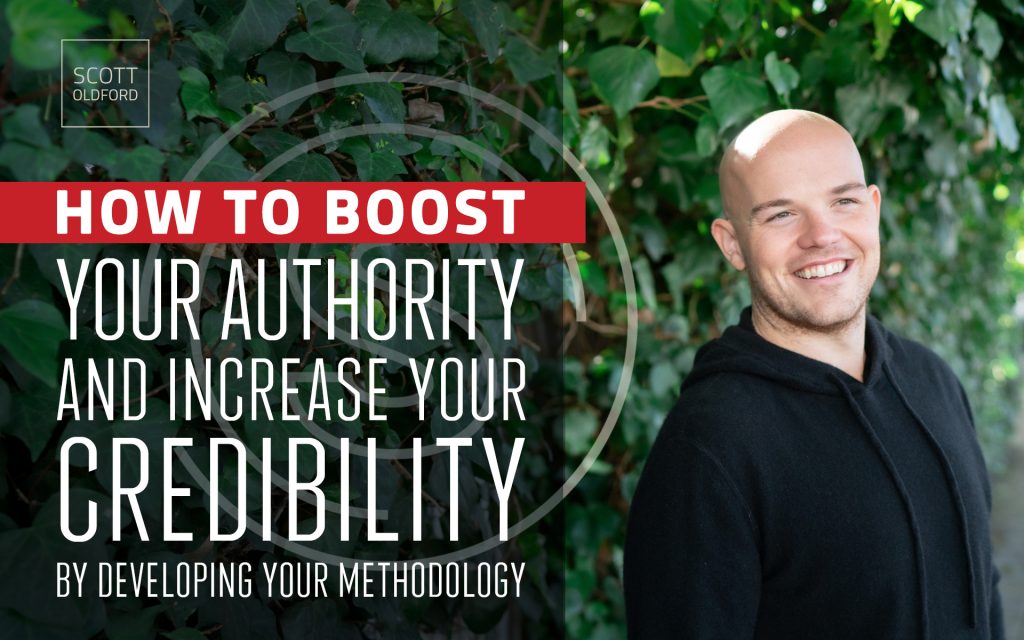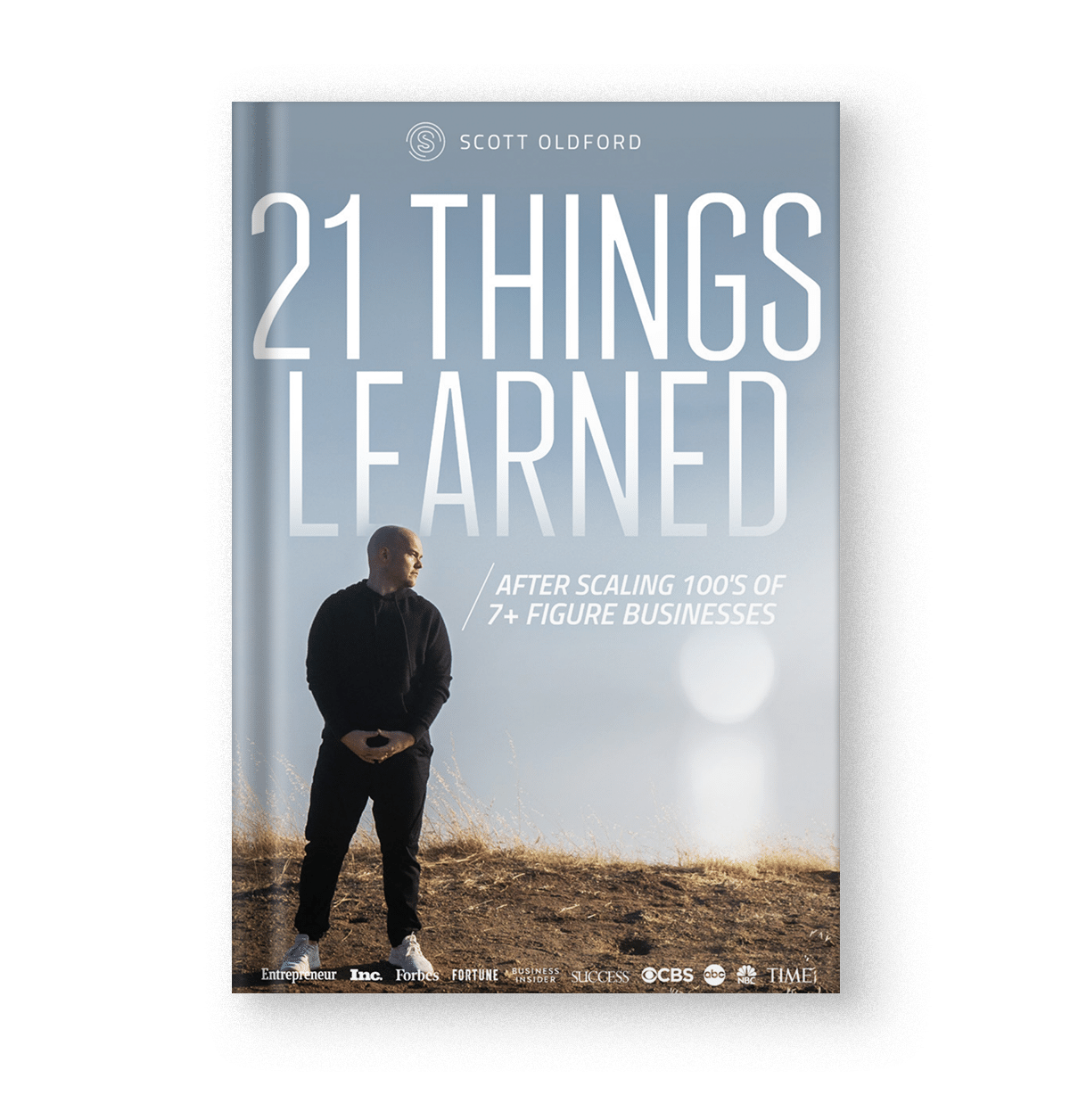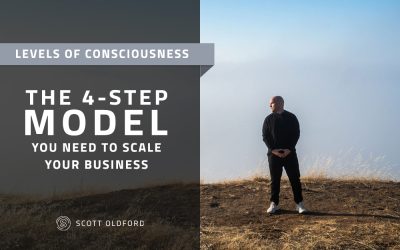
So you know how to deliver your customers/clients results, right?
You know what they want and you can help them achieve that result.
But in the end, they don’t come to you and choose your competitors even if their way of doing things isn’t entirely different than yours.
But your customers are at ease when they work with them and they trust that they can give them the results they want.
And the reason is that they have a methodology with clear steps that the clients/customers can see beforehand.
Having a methodology, even if it doesn’t have something new to it than what’s already shared on the web, will boost a service provider’s credibility and increase their authority in their customers’ minds.
It’s an important step to be relevant to your market and it will help take your business to the next level without much involvement from you.
Still not convinced?
The 5 Reasons Why You Need to Have A Methodology to Boost Your Credibility

I know that methodology isn’t the sexiest business topic to talk about, and it may seem to you that it doesn’t have a huge effect on your business growth, but it actually does. Why do I put so much emphasis on methodology? And why do I think it’s essential to grow a successful business past 7-figures?
Here are 5 reasons why.
#1. Without A Methodology, People Will Insist on Working With You Personally (And Only You)
Without a methodology, it’s really difficult to scale your business. The reason? Because people are going to want your personal attention. It doesn’t matter if you have a course or coaching or consulting, or really anything.
People can trust that you can deliver them the results they want, but if you’re selling any type of thing online and you don’t have a process, it’s very, very difficult to scale without it, because people are going to want to work with you directly.
People are going to want to work with you one-on-one. This doesn’t allow you to be able to create group programs or to hire consultants to be able to work with other people. But if you create a methodology, it allows you to scale, because you don’t have to be the one that applies it.
For example, I can hire coaches to help people implement the Relevancy, Omnipresence, and Intimacy method without much involvement from me. This enabled me to implement the ROI method in hundreds of businesses without me being directly involved.
In short, having a methodology allows you to effectively build a business that doesn’t have to have you included in the delivery of what you sell. That is how you scale a business past 7-figures and escape the 6-figure hamster wheel.
#2. It Makes Your ROI Continue to Move Upwards
One way you can make your ROI increase is by hiring people to do the work instead of you and get more clients/sales, which we discussed above. But you could also scale your business in different directions and not depend on one offering.
At the end of the day, your methodology is an intellectual property allowing you to grow your business in different areas. You can then create an empire around it.
You can do courses. Create a coaching business. Create a consulting/subcontracting business. Create a book. Create a workshop. And so on. It increases the value of your business. If it’s just you earning X number of dollars per hour, that’s all you have. That’s the only ability that you have.
And this is what I did to scale my business. I used to have a multimillion-dollar business that implemented the ROI method for other people. I have a mentorship program. I create entry-level workshops for a low-price. I also do consulting and coaching for high-fees from time to time.
I have a DIY course. And I’m creating a book around it. And that’s just the beginning. I’ll continue to grow this empire even more without much time involvement from me.
#3. Have A Sellable Asset
You can’t sell your personal brand or your 1-on-1 consulting service because you need to be present. But as I said your methodology is an intellectual property which is much easier to sell.
You can’t sell a coaching or consulting business easily, but you can sell a methodology or a process to another company that wants to be able to do something new or do something different. In general I’m not a huge believer of building coaching and consulting businesses for the purpose of selling them, but having a methodology gives you intellectual property that is trademarkable. It can be even patented in some places.
This allows you to be able to sell at least some part of your business in the future or build a version that can be sold. In short, it allows you to start building a business that, at some point, can be sold or, at the least, has the ability for you to step away or not be the CEO.
#4. It’s Easier to Get People to Buy A Methodology Than to Buy Into You
People are not looking for you or looking for someone funny to follow unless you’re in the entertainment industry. People want to solve a problem they have. You can help them solve it, but they are less interested in you. They just want the method to solve that problem.
And having a methodology allows you to do that. It allows you to go to the market and attract people by showing them the path of redemption without first having to have them buy into you or your brand.
In my work, I’ve found that it’s much easier to get someone to buy into The Relevancy, Omnipresence, and Intimacy Marketing & Sales Method and my processes that have built million-dollar companies than it is to get them to buy into my bald mugshot.
Because here’s the truth: If someone can’t understand what you do, they will not buy from you. And if someone can not contextualize you, you will lose their attention.
So a methodology allows for someone to understand what you do. So when it comes to my brand and the Relevancy, Omnipresence, and Intimacy methodology, here is how someone new will think when they know me…
“Okay, Scott’s using a marketing and sales framework. Okay. Got it.” All right, what does that mean to me? Okay, now someone is interested. If someone’s wanting to scale their marketing sales, I’m like, “Okay, let me go into that a little bit. Let me understand what that means.”
So your ability to ensure that something is simple and something can be contextualized, that is really true relevancy. Thus, your authority increases, you stand out from the crowd, and you’re able to charge what you’re worth.
#5. A Methodology Lets The Intellectual Mind Be at Peace
This is a hidden benefit that many don’t think about, but it’s huge when it comes to getting people to pull the trigger and purchase your products/services. A process allows for the intellectual part of the mind to be at peace so that the emotional part, the part that was going to actually buy something, is willing to buy something.
I’m sure you’ve noticed this before, that when people want to buy from you, it’s because of their emotions. They feel pulled toward you. Because without methodology you could still get people to want to get your products/services emotionally. They feel it’s the right thing to do because you resonate with them.
But the intellectual mind stops them from pulling the trigger. Because in order to allow ourselves to buy something, the intellectual part of our brain has to be like, “Yeah, yeah. That makes sense.”
And if their intellectual side isn’t on board, then they can’t articulate it to their business partner or their significant other or whoever it is, and they’re not going to make the purchase. They’re not going to buy it. So we want to always engage the emotional and the intellectual side of the brain.
When you create a process and a methodology, you can put the intellectual mind at ease because they will know what exactly they are getting to solve their problem.
In short, having a method allows you to build a sustainable business that can live without you, and in the marketplace, it allows you to attract your ideal, perfect customer by showing them the path going from pain to redemption, ensuring that they don’t have to fall in love with you or your brand first. And before getting overwhelmed, I want to share with you this…
The Story Of How I Developed The ROI Method – It Wasn’t Developed In A Day
When someone new comes to my business and hears me talk about methodology, they assume that I had my entire methodology and process created from day 1, but that’s far from the truth. My entire methodology five years ago started out as a way to be able to allow someone to understand that there are three different types of leads on a webinar.
In 2015, it started as a webinar slide, and it developed more and more, and then it got a logo, and then it got elaborated, and then it got featured in Forbes, and it got featured in Business Insider and continued to expand. But then I noticed that there’s more to scaling a 7-figure business than knowing your audience.
And then I said, “You know what? The SSF method is one piece of the whole puzzle. There’s actually this ROI framework that I figured out.” And so I launched that in early 2018. Actually, the R (relevancy) came from the fact that the SSF Method was no longer adequate based upon realizing that there are more pieces required.
I realized that the SSF Method was in reality messaging, and that messaging without positioning ended up told to deaf ears, and further, even if you had those two, if you didn’t have the right offer inside of alignment, no one would give you their money.
Actually the ROI method wasn’t like this at first. It was just the R part and the O part. But then I found that the intimacy part was missing which made me evolve it even further to have a more complete system.
And my understanding of the method increases with time and I’m able to articulate it better now than when I first discussed it in 2018. Actually later this year, I’m going to be launching my next framework all based around consciousness in marketing, being able to understand the mind, being able to understand consciousness.
And that again adds on top of the Relevancy, Omnipresence, and Intimacy methodology. More on how to evolve your methodology later on. Extracting a method takes time, but the more you talk about it, the more people get it, and the more you get it, and then you can articulate it better. It takes time to make something simple, but it doesn’t take a lot of time to be able to get started.
So don’t sweat it. Just get started. And here’s how you could actually get your methodology extracted without spending weeks sweating about it.
How to Extract Your Methodology And Validate It (A Step-By-Step Process)

So, when it comes to extracting a methodology out of all of the ideas in your head, assuming you don’t already have a methodology, here’s the technique that I use to get people to start developing one. This is actually a lot simpler than you might think. I highly recommend having someone to brainstorm this with.
First, you must realize that you already have a methodology. It’s the system that’s running your business right now. At a one-day event I held once, Joel asked, “How do I find that process?” I responded with, “Do you record your client calls when working with them?” He said yes and then smiled.
Every single time that you work with anyone inside of your business, you have a specific method that you use in order to achieve an intended result. All we’re doing is extracting this method, allowing for it to be contextualized, and then naming it in an easy-to-use framework so that people can understand it more easily.
Because if people don’t understand something quickly, they’re going to throw their hands up in frustration and quit. Our process and method is embedded inside of who we are because you’re likely really good at what you do. If you don’t have a method, it means you aren’t good at what you do.
So how to actually extract your methodology…
#1. Start With Your Ideal Customer Avatar In Mind
By now, you should have your customer avatar in mind. It’s the first step to become relevant in your market. If you haven’t developed it yet, then check out this post about customer avatar and how to develop it.
Make sure to download the 360-degree customer avatar worksheet to have a complete picture in mind and understand him/her better than most of your competitors. Once you have this ready in front of you, move to the next step.
#2. Outline Your Process to Go From Point A to Point B
Whether it’s your current customer or somebody that you want to attract, you want to essentially start writing for your ideal customer, step by step how you would help them. So, I am in this step and I did this and that, then this step is done. Now we’re into the next step, then the 3rd step. In the end, you might end up having 27 steps for everything that’s there.
I created a simple worksheet that you can download to help you think more clearly about different stages to move people from pain to solution. It’ll help make the process easier for you.
To simplify it for you, I want you to think about the last one or two or three clients you had. How did you actually get results for them? I want you to go step by step by step by step. Take pieces of paper, spread them all over a table, and write down and link each part of the process step by step by step. What is the common thread? Why do all of these things go this way? And so on.
And then I want you to take a new potential client. I want you to map them inside of this and be like, “Okay, I would do this. I would do this. I would do this,” and then you’re going to have a process.
#3. Simplify The Process
After you completely map out the steps that need to be taken, the next step is to simplify it. You want to start taking them and putting them into groups.
So for example, relevancy is all about offer development, all about avatar, audience, about messaging, positioning, all the things that you’re essentially learning in this series of posts including this one you’re reading right now.
And so at the beginning, it was all these steps. Then I started thinking here’s what makes someone relevant. And these pieces of the puzzle are now under relevancy. When I started my own methodology, the SSF method, that methodology came along because it was sidewalk, slow lane, fast lane.
What ended up literally happening for that methodology was, well here’s the mind of a customer when they’re not ready to buy, here’s somebody that’s ready to understand more about themselves, here’s somebody that’s looking for a solution.
What’s an easy way to be able to describe those three people so that somebody can get it quickly? And that’s an important principle of simplification; you can use metaphors and categorization to develop something that’s very complex yet easy to understand. The ROI method is very complex, but also very simple for someone to understand.
#4. You Need to Get It Out There As Quickly As Possible
The first thing to do once you have the methodology created is to start sharing it with people. When it comes to putting it out there, you can use Facebook ads, you can use your Facebook group, you can use email, you can use Instagram, you can use whatever it might be.
One important thing you need, at least at the beginning, is to have as much live interaction as possible, be that a webinar or hopping on a phone with current or previous clients or people you respect in the market. Whatever it might be, the more intimacy that you have at this point, the faster you’re going to be able to get to the version that you want to put your money behind, that you want to put your marketing behind.
If you want my suggestion, I’d suggest you go with:
- Clients you’re already working with and who know you (on the phone)
- Potential clients you may work with (on the phone)
- Live webinars for your audience
- Live webinars for people who don’t know you but have the same problem
#5. Notice The Feedback And Iterate Till You Find A Winner
When you talk about your methodology for the first time, notice the feedback to validate whether you nailed it or not. Here’s how this looked like when I wanted to validate the SSF method in 2015.
The very first time that I ever talked about the SSF method, which was 2015, I just put it out on a webinar once, and from that webinar, essentially people had a lot of good feedback and I was like, “Oh, well that’s really interesting.”
Then I got on the phone with some of those people and I brought them through it and they were like, “Oh my God, that makes so much sense.”
So if you bring someone through your methodology, and they’re like, “Oh my God, this is so good, this makes so much sense, it creates clarity,” then you’ve probably nailed it. If they seem more confused, then you want to figure out why they’re confused.
You need to understand that everything we do when it comes to putting a methodology out there is all about clarity. Clarity over sexy. The ROI method is sexy. Some of the things that I’ve developed are sexy, but it takes clarity before sexiness. So take the time. Get it out there, see the feedback, and once you have a winner, move to the next step.
#6. Naming Your Methodology
In terms of the name, there are a lot of different routes you can take. I mean, with the ROI method, I will say we ended up on something good. I was driving in the car, I was thinking about all this and I was thinking about relevancy and omnipresence.
I was thinking about how to tie in sales and I was like, “ROI” and then I was like, “Oh my God, that’s it.” But that took a while to figure out. And so the name can evolve.
I had the SSF method, I realized I wanted to change it to something that was a little bit more intelligent, I’ll say, in terms of naming. I ended changing it this year to the “3 Lane Marketing Method,” as I said. Then I had this whole idea of relevancy, but that wasn’t really enough. I needed something besides that.
It took probably nine months since I got the idea and I was like, “Yeah, I want to do this,” to move from just the SSF method to the ROI method, as well as a lot of sessions in person and that type of thing.
#7. Start Looking At Different Graphical Elements
Once you have the method simplified, you need to think about different graphical elements to include. People typically will end up understanding information in graphical elements better. And then, start just playing around with different ways of being able to present that to someone.
Just like the SSF method. We had a dozen versions of how to actually show that, until I created the latest version, which is now the 3 Lane Marketing Method, discussed in depth in this post about marketing messaging.
#8. Evolve Your Methodology
Once you nail your methodology and people resonate with it, you don’t want to stop there. You need to keep evolving it, which will happen naturally when you talk about it more, explain it more, and implement it with dozens of clients and customers.
Your ability to articulate it will be much better as you continue talking about it. The ROI method is continually evolving as I’m learning new things and as I’m seeing new things. Most of what’s in there isn’t law. It’s a theory, always subject to new information.
Of course, I would say that it’s a theory that’s backed up by a lot of results, but there are different pieces that have changed over the time since I first talked about it in 2017-2018.
It’s always going to evolve. It’s always going to be taking on new forms as it moves into the future. It might change names just like when I talk about marketing messaging in relevancy, which was the SSF method.
That’s all there was to it. And then that became one small piece of the full methodology that of course covered all marketing and sales versus just this one small piece. As time goes on, as you evolve and grow, you’re going to be like, oh this is this piece. And it might change the name. It might change the entire concept.
You might even get to the point where you’re like, you know what? This doesn’t make sense in the market anymore and it needs to evolve. Like we as human beings are always growing, and always evolving. Once you do this, validate as quickly as possible with as much intimacy as possible and then keep evolving it.
Publishing Your Method to The World The Right Way to Reap The Benefits (And Scale Faster)

You’ve got your methodology, you’re like, you know what? I think this is the best it can be right now. The question now is how do you go about publishing this and really making it its own thing?
After all, you want to turn your audience’s attention to it for the benefits mentioned above. Here’s how to do it the right way to get more clients to your business moving forward.
#1. Create Its Own Website (Or Landing Page At Least)
The first step to publishing your method is to have a place to send people to learn more about the methodology. Something like relevancyomnipresenceintimacy.com
As you see, the method has its own website. It does have a landing page and then of course it has a funnel on the back end of it. Creating a website for your methodology allows for it to be shared more easily; and you want something that doesn’t have a lot of resistance so that people can share it.
After all, that’s the whole idea around methodology. It’s very shareable and it’s very consumable without people needing to know you necessarily.
#2. Make It The Hero (Not You)
From now on, it’s not you who is helping someone in a testimonial. No longer is it you who are coaching, nor is it all about your mentorship. It’s the methodology that has helped people go from X to Y. Why do we do this?
Whenever we make something besides ourselves a hero, we automatically become more appealing just simply because of the fact that it’s not you showcasing how awesome you are.
People don’t like someone who seems self-centered. But most people are self-centered and so when we see somebody that’s not making it about them, their message becomes much more interesting from a human psychology perspective.
It allows you to create this as its own business, create it as its own company, as we discussed earlier. Instead of it being the “you show,” it becomes the methodology which allows you, later on, to hire coaches to expand and to actually scale a business.
#3. Tie It Into Everything You Do
It doesn’t matter if it’s a testimonial. It doesn’t matter if it’s your landing page. It doesn’t matter if it’s in your email. Everything should always be going back to your methodology.
If you’re in a webinar, mention the methodology 17 times. If you’re in a livestream, mention the methodology multiple times. You want to be mentioning the methodology every time people see you.
Do you notice how I keep mentioning the Relevancy, Omnipresence, and Intimacy method not just in this post but in every post on this blog and in different mediums as Facebook and email?
People need to be seeing the methodology repeatedly because the methodology allows for someone to get to the point of understanding, “Oh, there’s a process and I want to go and discover that process.”
This is how you get the person’s logical mind on board, by seeing where they are in their life right now and where they can be (their vision) and that you have a methodology to help them get there (the solution).
#4. Have Different Versions of The Methodology
You don’t want to talk about it only in text or only in videos.
You might have an audio version, a video, a webinar, and a website or a PDF, for example.
You want to have different versions because everyone consumes and understands information differently.
You want to give essentially all possible versions so that the person that perhaps is more of an audio person or more of a video person can understand your methodology and see how it could help them.
If you only have a website without any video on it, it’s not really going to work for someone who prefers videos and vice versa.
Basically, you want to give your audience as many different avenues to understanding your method as possible, regardless of what content format they prefer .
It’s not an all or nothing deal. You don’t need to have everything up and ready from day 1. It’s an iterative process. Start with what’s more comfortable and keep posting about your method in different formats as time goes.
#5. Do A Launch Around It
Who said that launches are only for products?
Just as launches can help publicize new products, they can do the same thing for new methods.
Make it an event to get more hype around it and to spread the word faster. You want your entire audience to know about it, and it wouldn’t be bad if you get more people to join your audience because of your new methodology during the launch 🙂
You could actually do a launch of a product that’s based on the methodology at the end of the methodology launch to transfer people’s attention from knowing about the method to using it to solve their problems.
And that’s exactly what I did when I launched the ROI method in early 2018.
We did a full launch. We spent a lot of money on it. And this created a big wave; a wave of new business, millions upon millions of dollars of new business because of that launch, because of that methodology.
If you have an audience, launch it out to them as this beautiful, sexy thing. If you don’t have an audience yet, then you’re going to be able to launch it out and take complete strangers and bring them in through this.
And they’ll be like, wow, this is something I really want to know more about. This is what I’ve been looking for, this is the process I’ve been looking for. This is a method. That’s how to put it out there. That’s how to publish your method.
Scale Your Business Faster

Your method is one of the most important parts of your strategy to be relevant. It’s one of the most important parts of an online business, no matter if you’re doing one-on-one coaching, membership, or anything in between.
Having a methodology is an important piece of the puzzle to scale your business past 7-figures. You now know how to go from having your methodology in your mind to extracting it, validating it, and publishing it the right way.
And if you want to have the complete system to scale your business past 7-figures, make sure to check the Relevancy, Omnipresence, and Intimacy marketing and sales method.
Yes, I just mentioned it one more time assuming that the above times are not enough. And you should do the same with your methodology 🙂




